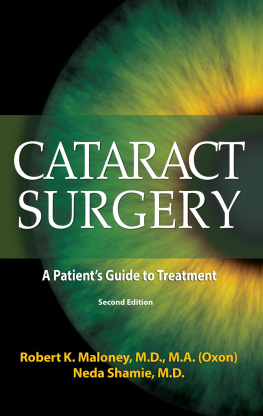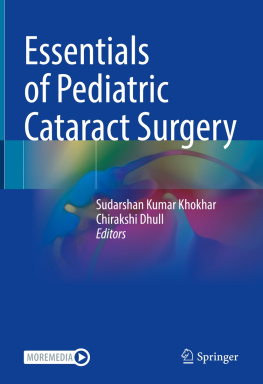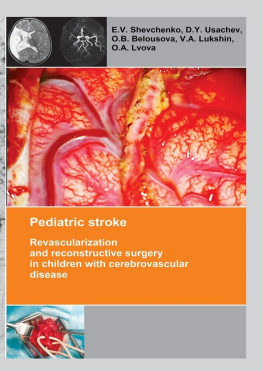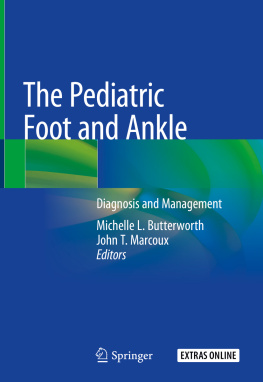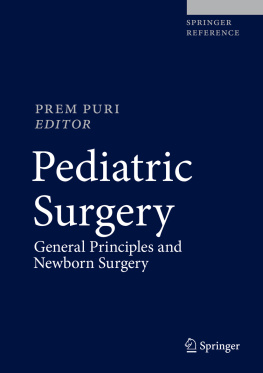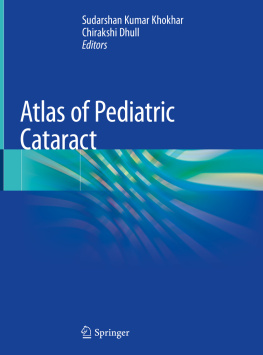Pediatric Cataract Surgery and IOL Implantation
A Case-Based Guide
Editor
Courtney L. Kraus MD
Department of Ophthalmology, Johns Hopkins Hospital Wilmer Eye Institute, Baltimore, MD, USA
ISBN 978-3-030-38937-6 e-ISBN 978-3-030-38938-3
https://doi.org/10.1007/978-3-030-38938-3
Springer Nature Switzerland AG 2020
This work is subject to copyright. All rights are reserved by the Publisher, whether the whole or part of the material is concerned, specifically the rights of translation, reprinting, reuse of illustrations, recitation, broadcasting, reproduction on microfilms or in any other physical way, and transmission or information storage and retrieval, electronic adaptation, computer software, or by similar or dissimilar methodology now known or hereafter developed.
The use of general descriptive names, registered names, trademarks, service marks, etc. in this publication does not imply, even in the absence of a specific statement, that such names are exempt from the relevant protective laws and regulations and therefore free for general use.
The publisher, the authors and the editors are safe to assume that the advice and information in this book are believed to be true and accurate at the date of publication. Neither the publisher nor the authors or the editors give a warranty, express or implied, with respect to the material contained herein or for any errors or omissions that may have been made. The publisher remains neutral with regard to jurisdictional claims in published maps and institutional affiliations.
This Springer imprint is published by the registered company Springer Nature Switzerland AG
The registered company address is: Gewerbestrasse 11, 6330 Cham, Switzerland
Foreword
Cataracts in children are common enough so that every pediatric ophthalmologist sees them and yet they are rare enough to create anxiety for the clinician who is trying to stay up on all of the latest evidence-based trends. Properly timed and expertly performed cataract surgery can bring sight to a child who would otherwise be blind. When the number of blind-years prevented is taken into account, pediatric cataract surgery may be the most cost-effective procedure in all of ophthalmology. However, unlike cataract surgery in an elderly adult, lens replacement in childhood removes youthful accommodation and derails emmetropization by removing the eyes natural offset to axial growth of the globe. As we commonly say: Kids are not just small adults.
In this important book, Dr. Courtney Kraus has assembled an impressive group of experts and has chosen a case-based approach as an efficient and effective way to transfer knowledge. It should be on the required reading list of every pediatric ophthalmology fellowship program and every clinician who operates on children.
In Part I: Approach to Lens Opacities, the readers will be able to refresh their knowledge about how to think simultaneously like a developmentalist, a geneticist, and a surgeon. Cataracts can appear at any age and in an endless variety of forms. For some visually insignificant opacities, surgery is not recommended but change is always possible as the child grows. Illustrative cases are used to guide our recognition of random unilateral developmental missteps, familial bilateral progressive opacities, and cataracts secondary to systemic diseases and disorders. Pattern recognition is emphasized and a directed specific workup is preferred over a shotgun approach.
In Part II: Surgery, the readers will enjoy the practical step-by-step guidance that is provided for the surgical procedure, the implant power decisions, and the care of the childs eye during healing. Surgeons who operate on children and adults will be able to fully understand the stark differences between the needed steps in children compared to what is commonly done in adults. In Part III: Correcting Surgically-Induced Aphakia, 15 chapters are presented to guide surgeons through complex settings and associations. These chapters describe the pros and cons of the many options we have when faced with a decision about what is best for an individual child or an unusual situation.
I congratulate Dr. Kraus for assembling this guide that so successfully presents a complex topic in a format that is so easy to read and understand. The children are the future and the future for children with cataracts is brighter when we are all informed and when we adopt new innovations while still remaining cautious and careful. In short, we treat our patients the way we would want our own children to be treated.
M. Edward Wilson
Preface
The presence of a lens opacification in childhood requires special considerations and nuanced care. For those ophthalmic surgeons working to identify and treat pediatric cataracts, surgical technique has progressed dramatically over the last decade with advancements in surgical tools and diagnostic devices. Through this text, the latest technology in lens implantation will be presented, but it remains screening, prompt identification, and consistent follow-up and amblyopia management that are the real determinants of visual acuity outcomes.
The goal of this textbook is to give the reader an overview of pediatric cataract surgery, with a focus on the use of intraocular lenses. By using the format of a case-based guide, it is hoped that the reader will consult each chapter as those unique and complex patients present themselves. Furthermore, for those still in training or looking to complement their education, the systematic progression through case scenarios will ideally form a strong curriculum with which to supplement those cases encountered in clinic and the operating room.
Courtney L. Kraus
Baltimore, MD, USA
Acknowledgments
This book represents the culmination of the collective efforts of 47 authors, some at the very beginning of their careers in ophthalmology and others with decades of experience. They span a multitude of institutions, academic and private practice, four countries, and three continents. I consider many dear friends and all remarkable authorities on the topics presented. To each individual, who took time out of a busy practice or training experience, time away from family and friends, and instead focused on authoring a carefully researched and thoughtfully presented chapter, I am tremendously grateful. Because of the great variety in backgrounds, quality of content, and clarity in the provided expertise, I truly believe this book can sit alongside many of the great texts in pediatric ophthalmology. It will hopefully offer trainee and established surgeon pearls, tips, and additional insight.
As I now have the privileged position to provide advice and guidance to my own trainees, I think my most oft-repeated advice when asked about fellowship is to seek out your mentor. Surgical fellowship is one of the last true apprenticeships, where master craftsman imparts upon novice the subtleties and wisdom that sets his/her practice apart from the next. In doing so, friendship and respect form, and for many, a lasting bond. It has been a great privilege to call Dr. M. Edward Wilson my mentor. In my time in fellowship, and through continued advice and guidance in the years that have followed, I have truly benefited from his knowledge, skill, mastery, care, and respect. For this I am tremendously grateful. I must also extend my thanks to the others that mentored me in my career in pediatric ophthalmology: Drs. Michael Repka, David Guyton, Edward Cheeseman, Richard Saunders, M. Millicent Peterseim, Lawrence Tychsen, Gregg Lueder, and especially Susan Culican.



